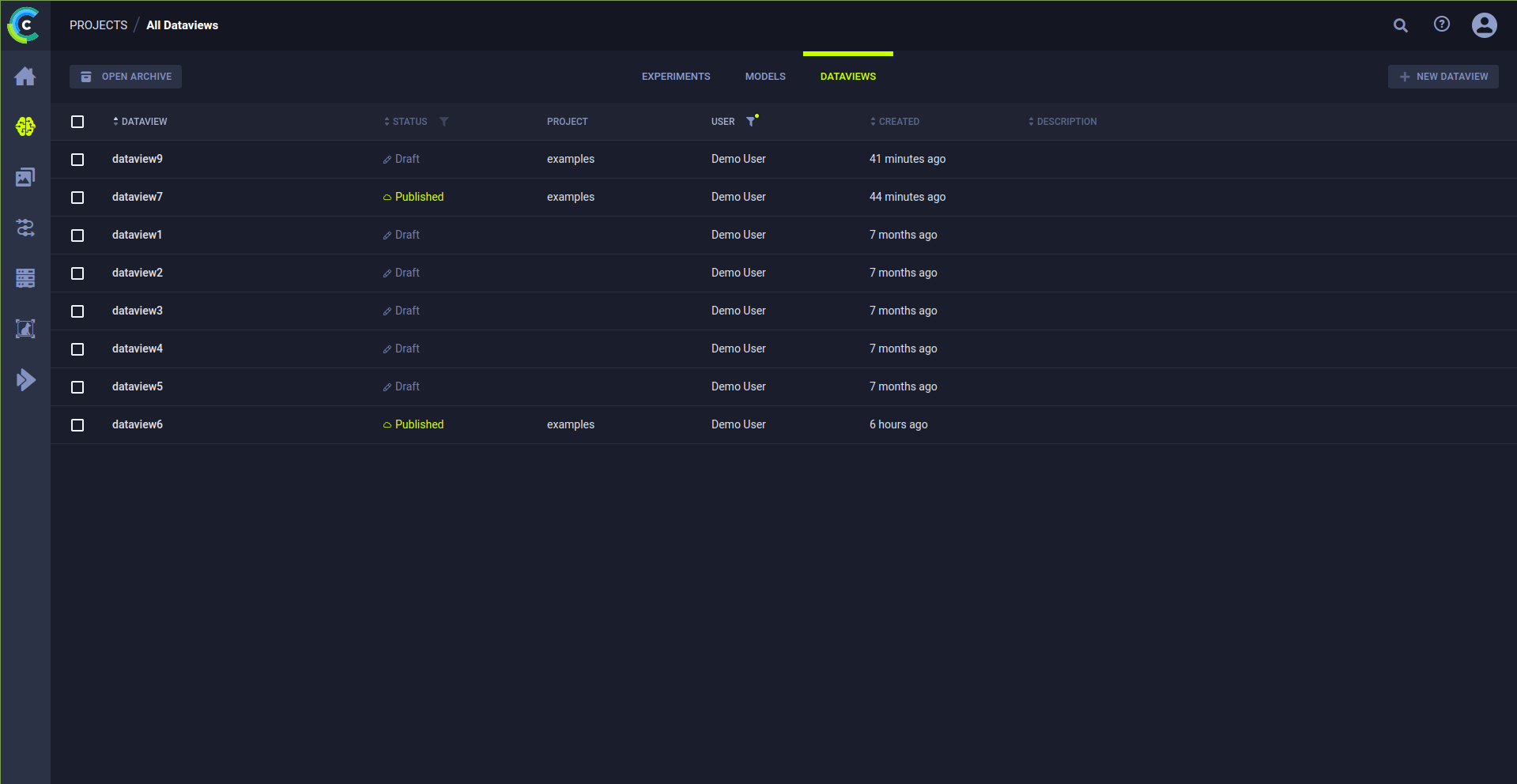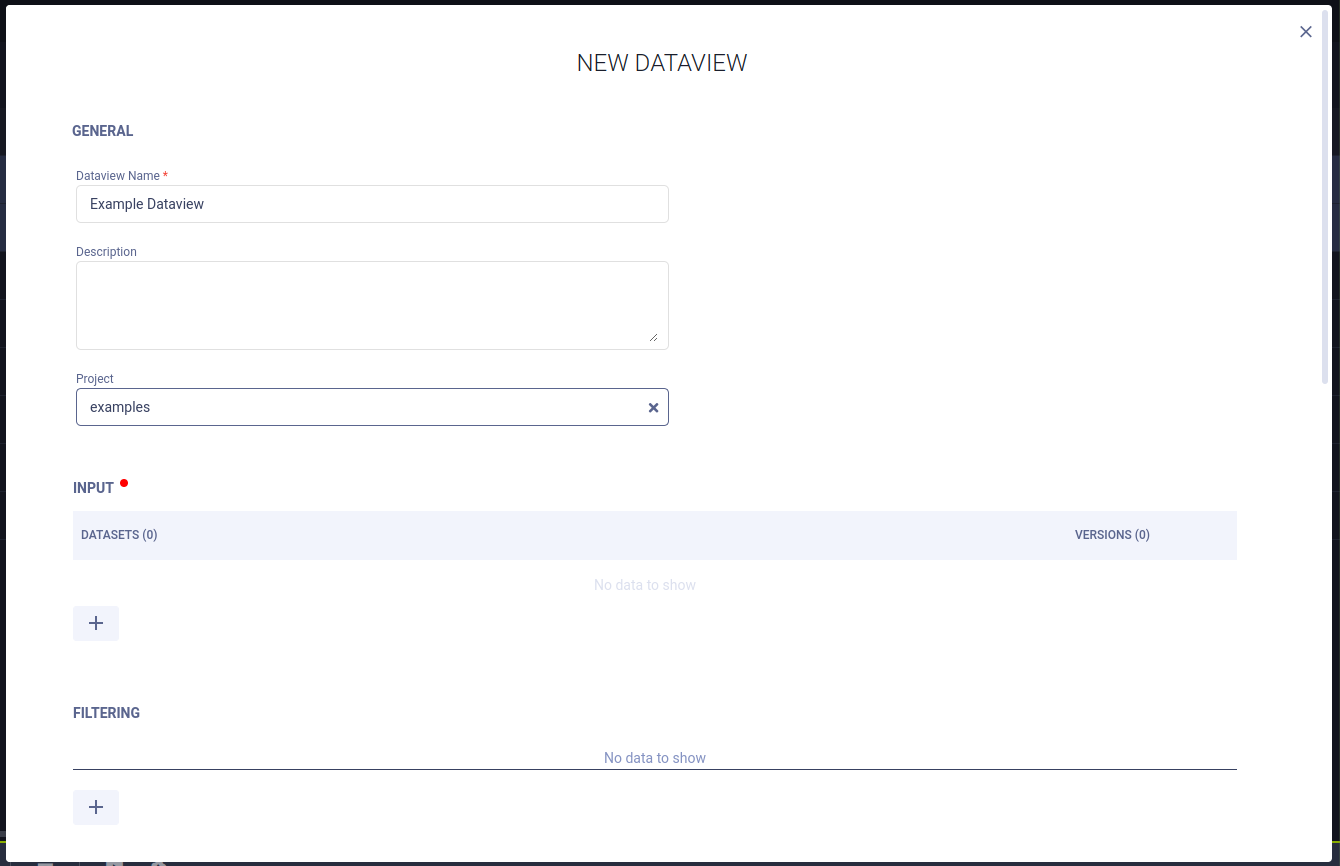3.9 KiB
| title |
|---|
| The Dataviews Table |
Dataviews appear in the same Project as the experiment that stored the Dataview in the ClearML Enterprise platform, as well as the DATAVIEWS tab in the All Projects page.
The Dataviews table is a customizable list of Dataviews associated with a project. Use it to view, create, and edit Dataviews in the info panel. Dataview tables can be filtered by name or name fragments and / or ID, by using the search bar.
The Dataviews table columns in their default order are below. Dynamically order the columns by dragging a column heading to a new position.
- DATAVIEW - Dataview name.
- USER - User who created the Dataview.
- Status - The status of the Dataview, which can be Draft (editable) or Published (read-only).
- CREATED - Elapsed time since the Dataview was created.
- DESCRIPTION
Customizing the Dataviews Table
The Dataviews table can be customized. Changes are persistent (cached in the browser), and represented in the URL. Save customized settings in a browser bookmark, and share the URL with teammates.
Customize the table using any of the following:
- Dynamic column order - Drag a column title to a different position.
- Resize columns - Drag the column separator to change the width of that column. Double click the column separator for automatic fit.
- Filter by user and / or status
- Sort columns - By experiment name and / or elapsed time since creation.
:::note The following Dataviews-table customizations are saved on a per project basis:
- Column order
- Column width
- Active sort order
- Active filters
If a project has subprojects, the Dataviews can be viewed by their subproject groupings or together with all the Dataviews in the project. The customizations of these two views are saved separately. :::
Dataview Actions
The following table describes the actions that can be performed from the Dataviews table.
| ClearML Action | Description |
|---|---|
| View details | Dataview details, including input datasets, label mapping, augmentation operations, and iteration control. Click a Dataview and the info panel slides open. |
| Archive | To more easily work with active Dataviews, move a Dataview to the archive, removing it from the active Dataview table. |
| Restore | Action available in the archive. Restore a Dataview to the active Dataviews table. |
| Clone | Make an exact copy of a Dataview that is editable. |
| Move to project | To organize work and improve collaboration, move a Dataview to another project. |
| Publish | Publish a Dataview to prevent changes to it. Published Dataviews are read-only. |
| Custom action | When available, provides a mechanism to define your own custom action which will appear in the context menu. See Custom UI Context Menu Actions. |
These actions can be accessed with the context menu (when right-clicking a Dataview or clicking the menu button
in a Dataview's info panel).
Some of the actions mentioned in the chart above can be performed on multiple Dataviews at once. Select multiple Dataviews, then use either the context menu, or the bar that appears at the bottom of the page, to perform operations on the selected Dataviews. The context menu shows the number of Dataviews that can be affected by each action. The same information can be found in the bottom menu, in a tooltip that appears when hovering over an action icon.
Creating a Dataview
Create a new Dataview by clicking the + NEW DATAVIEW button at the top right of the table, which open a NEW DATAVIEW window.


